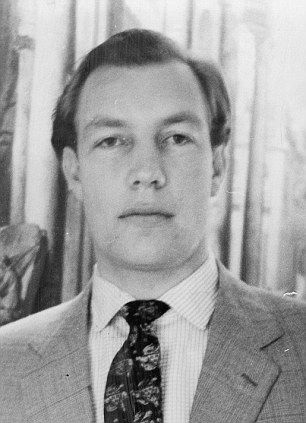John Aspinall The Gambling Showman Who Built Zoos for Tigers and Dukes
- Anna Avis

- Sep 16
- 6 min read

Imagine a man who could ruin a duke at the card table, provoke outrage at dinner by praising Hitler, and then stroll into his garden to stroke a gorilla as if it were a family dog. That was John Victor Aspinall, “Aspers” to his friends, a man whose life blurred the line between charm and menace, brilliance and recklessness.
To admirers, he was a swashbuckling conservationist who poured his fortune into saving rare animals. To critics, he was a ruthless gambler who preyed on the addictions of Britain’s elite, a provocateur who made a sport of offensive remarks, and an eccentric whose obsession with wild animals cost human lives. Even his friends admitted that scandal seemed to follow him. As one associate bluntly told journalist Douglas Thompson:
“John was not a great man. He was a manipulator, a showman. He ruined more lives than he saved.”

Early Life of Privilege and Self-Myth
John Aspinall was born in Delhi in 1926, in the final decades of the British Raj. His father, Lt-Col Dr Robert Stivala Aspinall, was a British Army surgeon of Maltese descent, while his mother, Mary Grace Horn, came from an English engineering family. It seemed an entirely respectable colonial upbringing – yet even this part of Aspinall’s life carried a twist. Later, he discovered that his biological father was in fact George Bruce, a soldier of Nordic heritage. The revelation that his identity had been concealed fed into a lifelong fascination with secrecy, deception, and reinvention.
Raised amid empire privilege, Aspinall never truly respected authority. At Rugby School he was expelled for inattention, and at Jesus College, Oxford, he famously chose to skip his final exams to attend the Gold Cup at Ascot. To his peers, it looked reckless; to Aspinall, it was proof that he would live on his own terms. He never gained a degree, but he gained a reputation for disregard – a trait that would define his later career.
Gambling Into High Society
By the 1950s, Aspinall had found his calling in gambling. Spotting a gap in Britain’s restrictive laws, he began hosting private Chemin de Fer games in rented London flats. The law defined a gambling house as one where play occurred more than three times, so Aspinall and his accountant, John Burke, rotated addresses to stay ahead. Police were bribed, often by Aspinall’s mother, Lady Osborne, who allegedly handed out cash to keep officers at bay.
The games attracted Britain’s wealthiest – dukes, earls, and establishment figures who were drawn to the glamour of exclusive gaming. The stakes were astronomical. The Earl of Derby once lost £300,000 in a single sitting. William Stirling, the brother of SAS founder David Stirling, wrote out an IOU for £173,500. These were not casual losses; these were fortunes that changed the futures of families and estates.
Critics accused Aspinall of deliberately targeting weak-willed gamblers, building friendships only to exploit them. As one contemporary put it: “He hunted gamblers like a big-game hunter stalks prey. They thought they were his friends, but to Aspinall, they were just his bankroll.”
The Clermont Club: Glamour, Gangsters and Cheats
The 1960 Betting and Gaming Act legalised casinos, and Aspinall seized the chance to go legitimate. In 1962 he opened the Clermont Club in Berkeley Square, Mayfair. It was unlike anything London had seen before. Members included dukes, marquesses, cabinet ministers, financiers, and even notorious figures like Lord Lucan. The Clermont became synonymous with glamour, high society, and secrecy.
But beneath the glitter, corruption thrived. Douglas Thompson’s book The Hustlers and Channel 4’s documentary The Real Casino Royale later alleged that Aspinall partnered with gangster Billy Hill to rig games using a system known as “the Big Edge.” The scam allegedly fleeced patrons out of millions, stacking the odds while maintaining the illusion of fair play.

John Burke, Aspinall’s financial director, eventually resigned, calling the whole enterprise “rotten from top to bottom.” Even aristocrats weren’t immune. Several lost ancestral homes and family fortunes. One commentator observed dryly: “Aspinall ruined more dukes than the Crown ever managed.”
The Clermont cemented Aspinall’s reputation as a king of high-society gambling. But it also exposed the darker truth: he was willing to exploit anyone, even his own friends, to bankroll his lifestyle.
Zoos of Risk and Death
By the mid-1950s, Aspinall’s gambling fortune funded his other obsession – wild animals. In 1956 he purchased Howletts, a country estate in Kent, and began filling it with exotic species. Later, he expanded to Port Lympne, turning the grand Sassoon mansion into another wildlife park.
Aspinall’s philosophy was unique. He believed keepers should form intimate bonds with animals – playing with tigers, wrestling with gorillas, walking elephants like pets. To visitors, it looked extraordinary, almost magical. And to conservationists, Aspinall delivered results, overseeing some of Europe’s most successful gorilla breeding programmes.
But the risks were immense. Several keepers were killed by animals. Tigers mauled handlers; gorillas turned violent without warning. Aspinall dismissed the deaths as part of the natural order, once remarking: “If you can’t trust an animal, you don’t deserve to keep it.”
To supporters, he was a visionary. To critics, he was reckless, placing people in harm’s way to indulge a personal fantasy. As one former keeper later said: “Working for John was like playing Russian roulette. The animals were magnificent, but he treated risk as entertainment.”
A Taste for Extremes
Aspinall was not content to shock with animals or gambling. He also shocked with words. He frequently voiced admiration for Adolf Hitler and made antisemitic remarks in private conversation. Whether he believed them or simply relished provocation is debated. Journalist Lynn Barber noted: “He enjoyed being outrageous. He thrived on people’s horror.”
Some close friends suggested it was a kind of performance, a way of dominating conversation. Others believed he meant every word. John Burke once remarked: “He liked to play the big man, but sometimes you felt he believed the poison he was spouting.” Either way, Aspinall cultivated controversy as carefully as he bred gorillas – he understood its power to keep him at the centre of attention.
Lord Lucan: Loyalty or Complicity?
Of all his scandals, none clung tighter than Aspinall’s friendship with Lord Lucan, the aristocrat who vanished in 1974 after murdering his nanny. Lucan was a regular at the Clermont Club and part of Aspinall’s inner circle.
Aspinall claimed Lucan committed suicide by scuttling his boat and drowning. But whispers persisted that he and Sir James Goldsmith helped Lucan escape abroad. Aspinall’s former secretary later alleged she arranged overseas trips for Lucan’s children so he could watch them from a distance.

Aspinall himself seemed to revel in the mystery. Lynn Barber recalled an interview in which he slipped up, hinting that Lucan had lived on. “He liked being at the centre of the Lucan myth,” she said. “It was as if the truth didn’t matter – only the game of keeping people guessing.”
For many, it was evidence that Aspinall’s loyalty to friends sometimes crossed into complicity with crime.
Decline and Final Acts
Though he earned millions, Aspinall was perpetually short of money. His zoos consumed vast sums, forcing him back into the gambling world repeatedly. In the 1980s, he sold clubs for a reported $30 million, but by the 1990s he was again in financial trouble.
In 1997 he entered politics, running as a candidate for Sir James Goldsmith’s Referendum Party. He campaigned against Britain’s membership in the European Union, winning over 8% of the vote in Folkestone and Hythe – one of the party’s best results. But his flair for provocation didn’t translate into political credibility.
Aspinall died of cancer on 29 June 2000, aged 74. For some, he went out as he had lived – colourful, controversial, and impossible to ignore.
The Legacy of a Dangerous Showman
Today, the Aspinall Foundation continues to operate Howletts and Port Lympne, pioneering rewilding projects that return gorillas, rhinos, and other endangered species to the wild. Supporters celebrate this as the lasting achievement of a visionary.
But for critics, the parks are monuments to a man whose fortune was built on exploiting gamblers, whose views were often toxic, and whose appetite for risk endangered both people and animals. As one associate put it with brutal honesty: “John Aspinall loved animals, but he loved risk even more. At the tables, in politics, or with tigers – someone else always paid the price.”
Sources
Thompson, Douglas. The Hustlers.
Channel 4 Documentary: The Real Casino Royale.
Barber, Lynn. Interview with John Aspinall, 1990.
BBC News, Glenn Campbell, “Lucan: Aspinall’s Secretary Reveals Secrets,” 2012.
The Guardian obituary, 30 June 2000.
The Telegraph obituary, 30 June 2000.
Aspinall Foundation: https://www.aspinallfoundation.org







































































































Comments